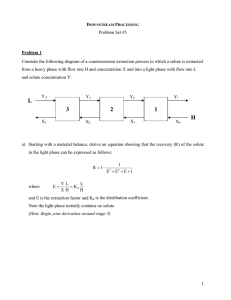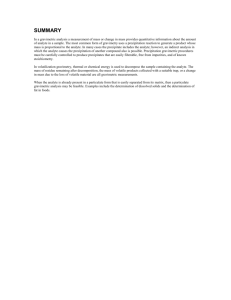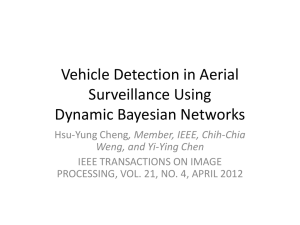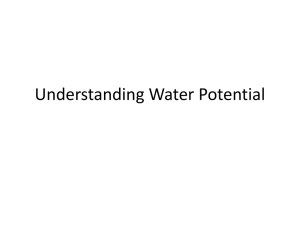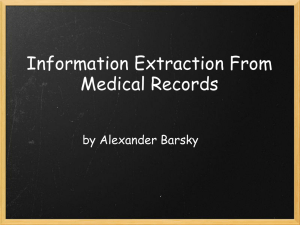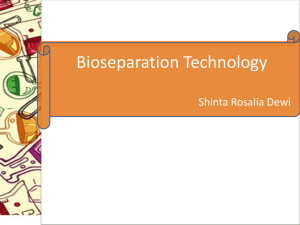Solvent Extraction
advertisement
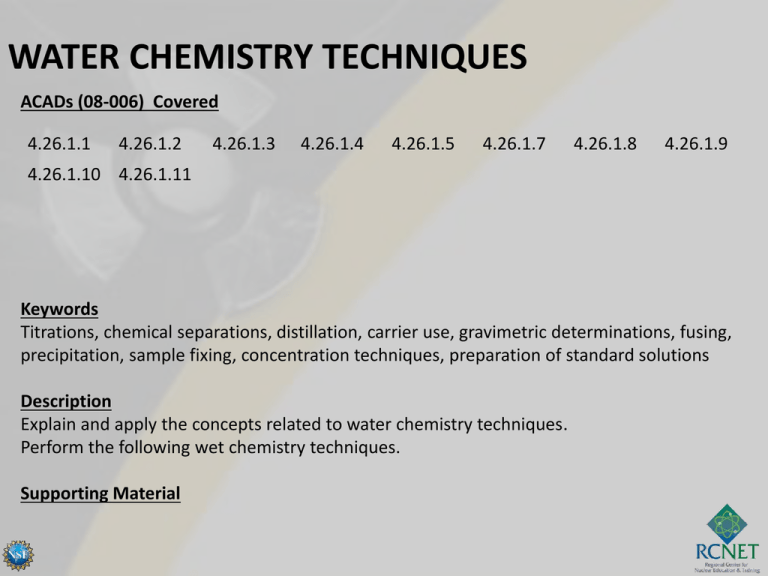
WATER CHEMISTRY TECHNIQUES ACADs (08-006) Covered 4.26.1.1 4.26.1.2 4.26.1.3 4.26.1.4 4.26.1.5 4.26.1.7 4.26.1.8 4.26.1.9 4.26.1.10 4.26.1.11 Keywords Titrations, chemical separations, distillation, carrier use, gravimetric determinations, fusing, precipitation, sample fixing, concentration techniques, preparation of standard solutions Description Explain and apply the concepts related to water chemistry techniques. Perform the following wet chemistry techniques. Supporting Material titrations quantitative measurement of an analyte in solution by completely reacting it with a reagent solution. chemical separations • • • • • • • • Oxidation-Reduction Processes Complexation Solvent Extraction Volatilization and Distillation Electrodeposition Chromatography Precipitation and Coprecipitation Carriers and Tracers distillation • The separation of a volatile component(s) of a mixture by vaporization at the boiling point of the mixture and subsequent condensation of the vapor. • Essentially takes advantage of the differences in the boiling points of the constituents to separate a mixture into its components. carrier use Carrier: use of a material that is different in isotopic make-up to the analyte and that raises the effective concentration of the material to the macro level. • Isotopic Carriers • Nonisotopic Carriers • Common Carriers • Holdback Carriers • Yield of Isotopic Carriers gravimetric determinations • Quantitative determination of an analyte based on the mass of a solid. • 4 fundamental types of gravimetric analysis: • • • • physical gravimetry thermogravimetry precipitative gravimetric analysis electrodeposition fusing • Accomplished by heating a salt (the flux) mixed with an appropriate amount of sample. • Mixture is heated to a temperature above the melting point of the salt, and the sample is allowed to react in the molten mixture. • When the reaction is completed, the mixture is allowed to cool to room temperature. • The fused sample is then dissolved, and the analysis is continued. precipitation • Used to isolate and collect a specific radionuclide from other (foreign) ions in solution by forming an insoluble compound. • Accomplished by combining a selected ion(s) in solution with a suitable counter-ion in sufficient concentrations to exceed the solubility of the resulting compound and produce a supersaturated solution. sample fixing (preservation) • Methods of preservation are relatively limited, intended generally to • (1) retard biological action • (2) retard hydrolysis of chemical compounds and complexes • (3) reduce volatility of constituents • (4) reduce absorption effects. • Preservation methods are generally limited to pH control, chemical addition, refrigeration, and freezing. concentration techniques Wide variety of methods for preconcentration and separation of trace elements, including: • Evaporation • Freezing • Coprecipitation • Flotation • Extraction • Sorption • Electrolysis concentration techniques Solvent Extraction Purposes: i) Preconcentration of trace elements ii) Elimination of matrix interference iii) Differentiation of chemical species. concentration techniques Solvent Extraction Techniques: • Batchwise single stage extractions • Multistage countercurrent continuous processes • Extraction without chemical change • Solvation mechanism • Ion exchange mechanism • Ion pair extraction • Aqueous two-phase extraction preparation of standard solutions Two common types: • Molar solutions • Normal solutions preparation of standard solutions MAKING MOLAR (M) SOLUTIONS 1 Molar solution (1M) contains 1 mole of solute dissolved in a solution totaling 1 liter. A mole is the molecular weight (MW) expressed in grams (sometimes referred to as the ‘gram molecular weight’ (gMW) of a chemical). Thus, 1 M = 1 gMW of solute per liter of solution. preparation of standard solutions MAKING NORMAL SOLUTIONS (N) "1 Normal" solution (1 N) contains 1 “gram equivalent weight” (gEW) of solute, toppedoff to one liter of solution. N = Weight of solute / [milliequivalent weight of solute × Volume (in ml) of dilution]
